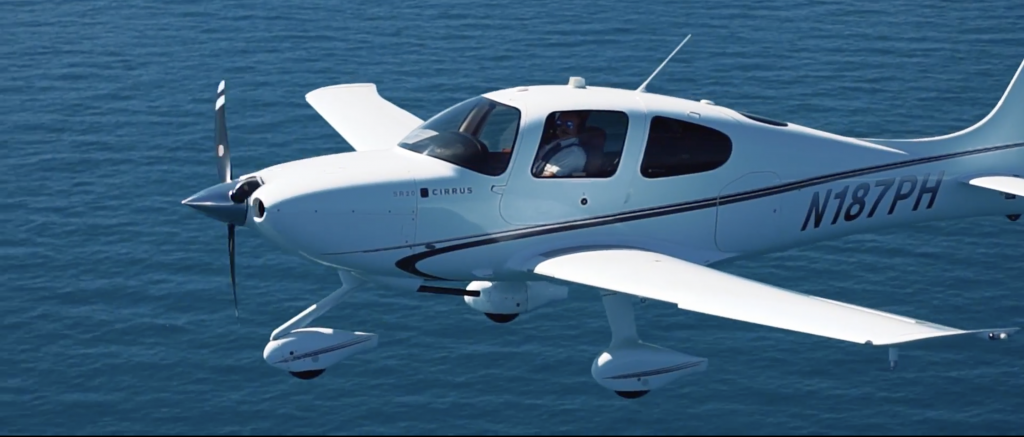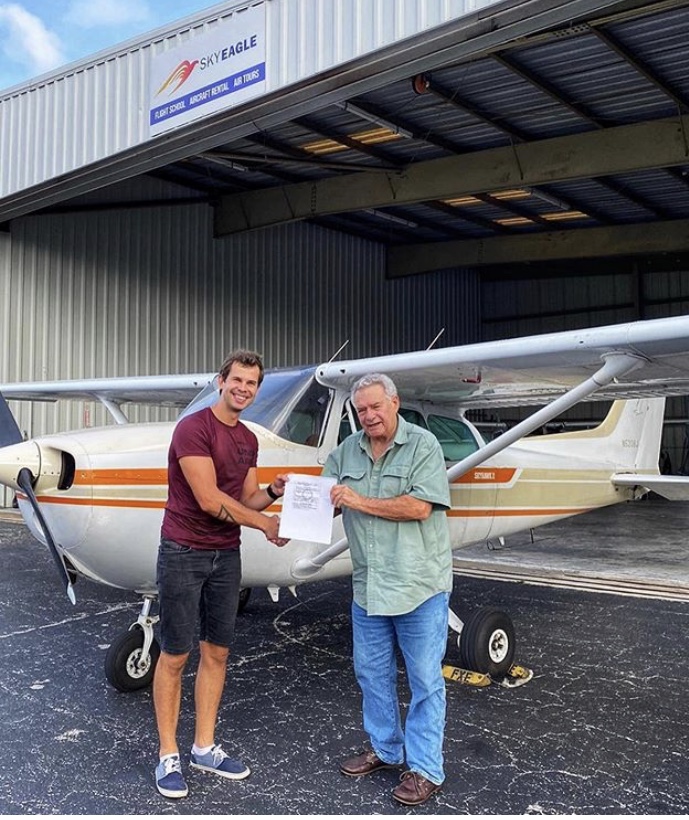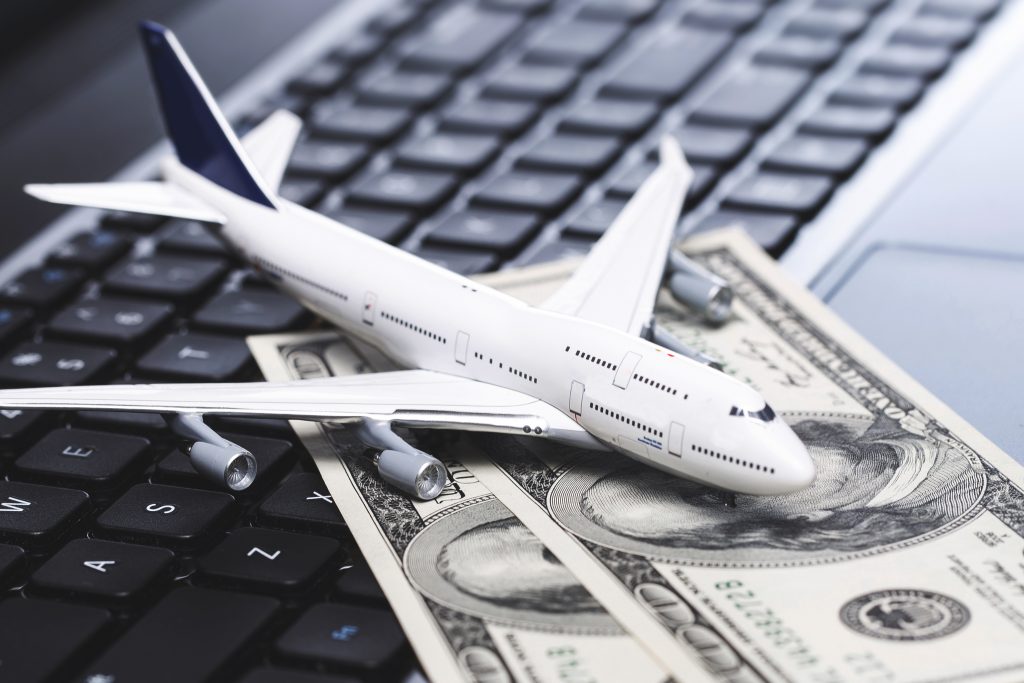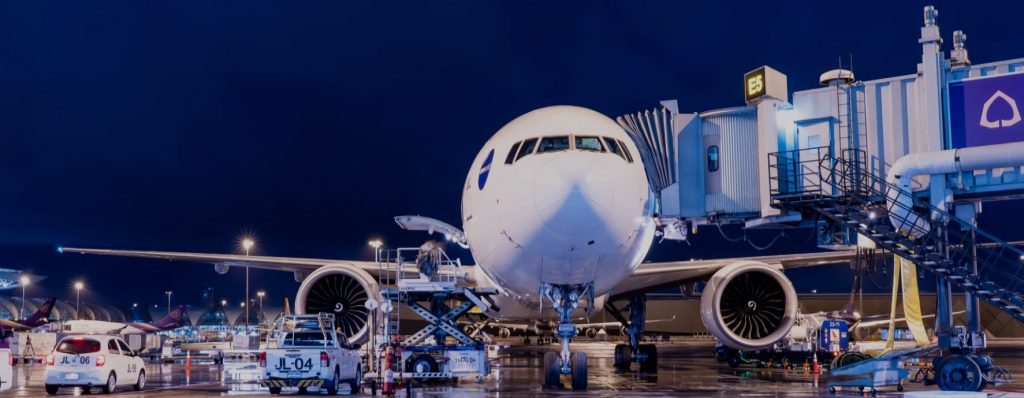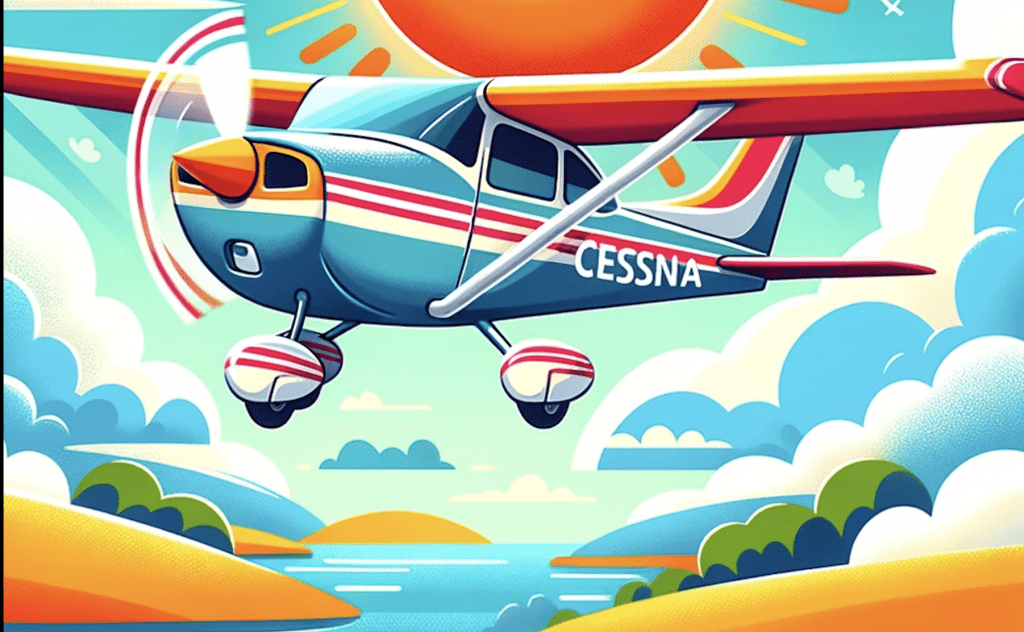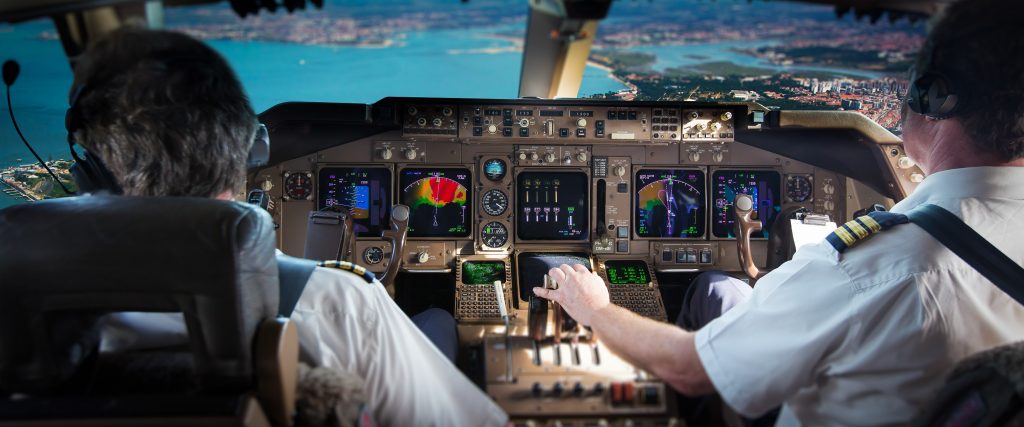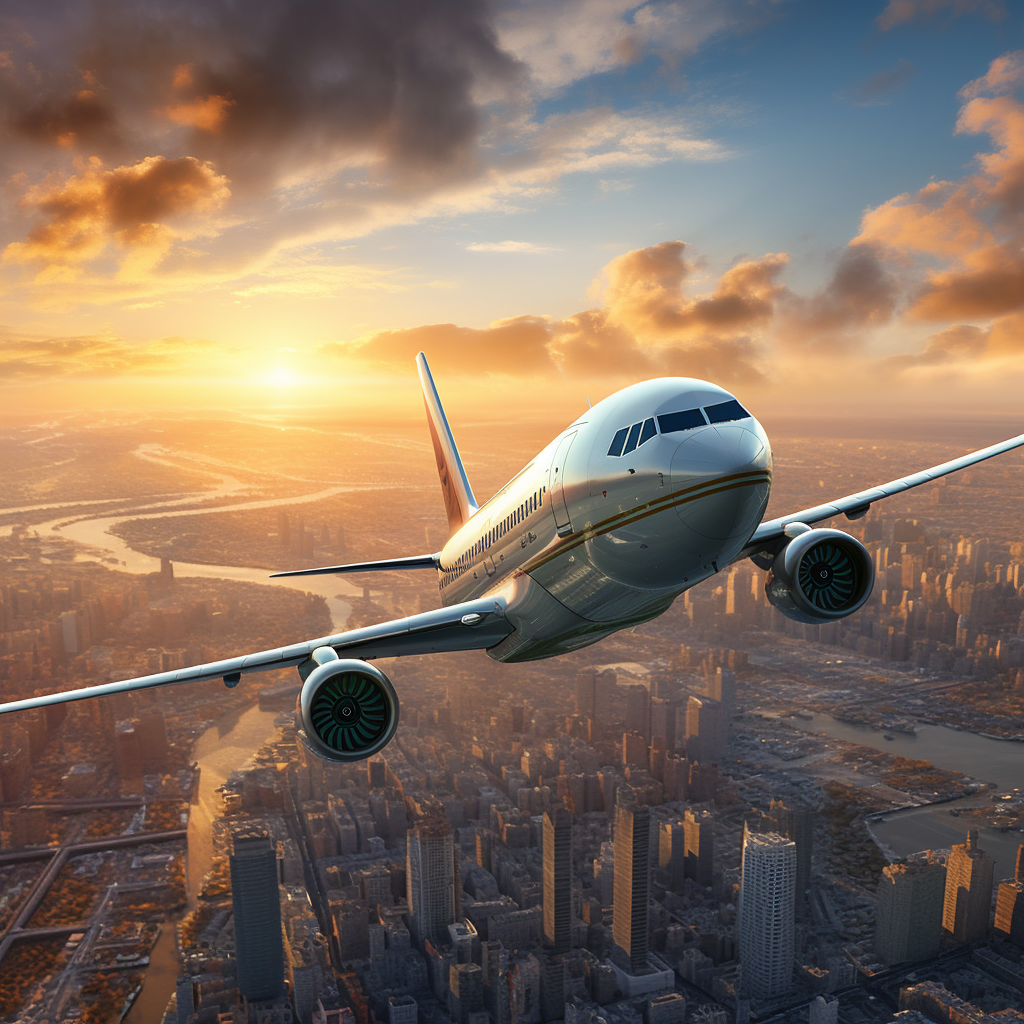Dear Future Aviators,
The most common question we are asked in reference to flight training is: how much does it cost to become a pilot? In this post, we’ll review the topic in detail and give our tips on how to reduce the cost to get your pilot’s license.
Flight School Cost Breakdown
The cost of your training will consist of the following components:
- Theoretical training – $65 per hour, one-on-one ground instruction
- Aircraft rental – $165 per hour for the Cessna 172 aircraft
- Flight Instruction – $ 65 per hour
- Purchase of books and necessary supplies (maps, flight computer, plotter, etc.)
- Purchase of written exam study prep courses – from $49
- Written Exam – $160
- Medical Exam – approximately $120
- International student costs (M1 Visa, TSA Screening and fingerprints) – $600
Let’s now examine, more in detail, the cost of flight lessons. The largest component in the cost of flight training is the rental of the aircraft. At SkyEagle, we use an hourly tuition model. We offer a flexible hourly pay scale being that all students have different needs and requirements. A student who is able to complete the entire training program within the minimum time stipulated by The FAA, (40 hours for a Private Pilot) will spend less amount of money and time as opposed to a student who will need additional training to complete the program. The ground and flight instruction costs are $ 65 per hour. The cost of the aircraft rental is $165 per hour, making the total cost for one flight hour with an instructor $230, which includes fuel.
A student may reduce their training expenses by self-studying for the theoretical lessons using various books and online platforms. There are also times where we conduct special group study sessions, which will also limit costs.
Additional expenses
In addition to actual flight training costs, there are other supplemental expenses that must be incurred such as:
- FAA Medical Exam – approximately $100
- Books and necessary supplies (maps, flight computer, plotter, etc.) – approximately $250
- Quality Aviation Headsets – $300 to $1200
- Examination Fees – $600-$1200
- Additional Expenses for Foreign Students:
- M1 Student Visa – $500 for issuing an I-20 form, Embassy Fee for I-901, consular fee for issuing a visa – approximately $250
- TSA Screening – $130 per request
- TSA Fingerprint Submission – approximately $160
In conclusion, the past statistics of our graduates show the average flight time it took for our students to complete their private pilot course is anywhere between 55-65 flight hours at a cost to become a pilot of approximately $12,000-$15,000. It is very rare that a student will complete a private pilot course in the minimum required time which would normally cost $10,000.
The above pricing is based on our fleet of Cessna 172N aircraft, which is the most common flight school trainer in the world. We also offer training in the Cirrus SR 20 G2, which is equipped with modern avionics, digital readouts, and autopilot. The cost of this aircraft is only $50 more per hour than the Cessna 172. If a student wishes to conduct their training in this particular aircraft, the price will ultimately be approximately 20% more than the cost of doing the training in the Cessna.
Payment Methods and Financing
Wondering if there are companies that pay for flight training? Most financial institutions do not offer financing for a student wanting to obtain a Private Pilot Certificate, being that it is considered a recreational license. However, we have several partnerships with institutions that focus on aviation and flight training. You can find out more about Financing options on our website.
Options for international students
Unfortunately, financing is not available to international students. If students are declined for financing from these outlets, they are urged to seek financing at their local bank or private lending outlet, utilizing a credit card, line of credit, or fixed interest personal loan.
Payment methods at SkyEagle Aviation
SkyEagle offers various ways for a student to fund their course for maximum convenience:
- Pay as You Go – With a credit card on file, a student may choose to be billed at the completion of each session as they will be able to monitor their finances on a daily basis.
- Incremental Prepayments – Most students pay on an average of $3,000 increments as the funds are placed on a student account. As the student proceeds through his course, the student account will decrease. As the balance reaches $300, we will request a replenishment amount of choice to the student account.
- Prepayment in Full – If a student wishes to pay for the entire course upfront, they may qualify for (up to and including) a 10% discount on the entire course.
Tips on How to Keep Flight Training Costs Down
For international students
Please be sure to be able to communicate at a level three or higher in English. Not being able to effectively understand the English language, which is the universal language of aviation, will result in an increase in training ultimately raising costs.
Study before arrival
Prepare for the theoretical portion of your training prior to your arrival. All study materials are available online through video tutorials on our social media outlets. There are also third-party training materials that may be purchased. The more knowledge you receive, the less you will have to conduct during your training.
Get your books (Purchase or Free PDF Versions)
The Pilot Handbook of Aeronautical Knowledge and Airplane Flying Handbook both are available at SkyEagle, on Amazon, or in most book stores. The PDF versions are available for free on the FAA website. The material covers up to 90% of the theoretical material covered during the course.
Written exam preparation
Prepare for the written exam using personal computer, smartphone, and tablet applications, such as Gleim, Sheppard Air, Dauntless, Sporty’s.
Schedule frequent training sessions
When enrolled in our training courses, be sure to commit to at least 3 days per week to efficiently conduct your training. The more frequent training is scheduled, the more proficient a student becomes. Extended lapses in training cause stages to be repeated, contributing to higher program costs.
To Sum Up
Please keep in mind that a holder of a Private Pilot Certificate does not permit an airman to fly for hire or earn wages while flying.
Even though flight training does have significant costs, it is a “priceless” investment well worth it as not everyone is able to touch the clouds and fulfill their dream of becoming a pilot.
Still have questions about the cost to become a private pilot? Don’t hesitate to contact us to get a consultation.
